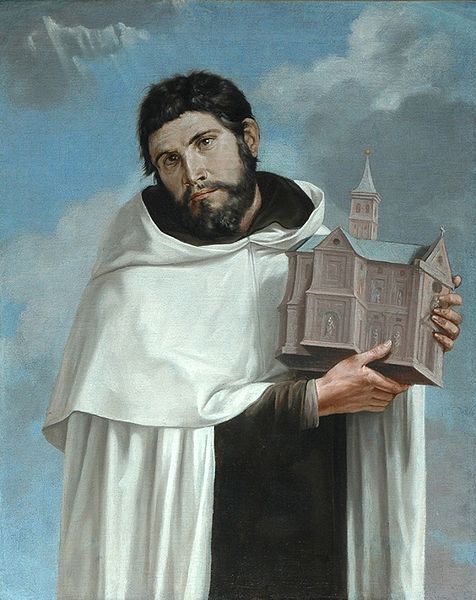Difference between revisions of "Saint Agabus (1613 Maino), art"
Jump to navigation
Jump to search
| (3 intermediate revisions by the same user not shown) | |||
| Line 1: | Line 1: | ||
[[File:Agabus Maino.jpg]] | |||
According to later Christian traditions, [[Agabus]] was a former suitor of the Virgin Mary who became a hermit and built a chapel dedicated to her on Mount Carmel. Here he wears a Carmelite robe, probably because of seventeenth-century attempts to associate the Order with the prophets of Mount Carmel | '''Saint Agabus ''' (1613) is a painting by [[Juan Bautista Maino]], at Bowes Museum, County Durham, England. | ||
*[https://commons.wikimedia.org/wiki/File:Maino_St._Agabus_standing_in_front_of_a_clouded_sky_110.5_x_90.2_cm.jpg Wikimedia] | |||
According to later Christian traditions, [[Agabus]] was a former suitor of the Virgin Mary who became a hermit and built a chapel dedicated to her on Mount Carmel. Here he bears a model of a chapel and wears a Carmelite robe, probably because of seventeenth-century attempts to associate the Order with the prophets of Mount Carmel. | |||
[[Category:1613|*Maino]] | |||
[[Category:Art--1600s|1613 Maino]] | |||
[[Category:Paintings|1613 Maino]] | |||
[[Category:Made in the 1610s|*1613 Maino]] | |||
[[Category:Agabus (subject)|1613 Maino]] | |||
Latest revision as of 12:55, 8 March 2017
Saint Agabus (1613) is a painting by Juan Bautista Maino, at Bowes Museum, County Durham, England.
According to later Christian traditions, Agabus was a former suitor of the Virgin Mary who became a hermit and built a chapel dedicated to her on Mount Carmel. Here he bears a model of a chapel and wears a Carmelite robe, probably because of seventeenth-century attempts to associate the Order with the prophets of Mount Carmel.
